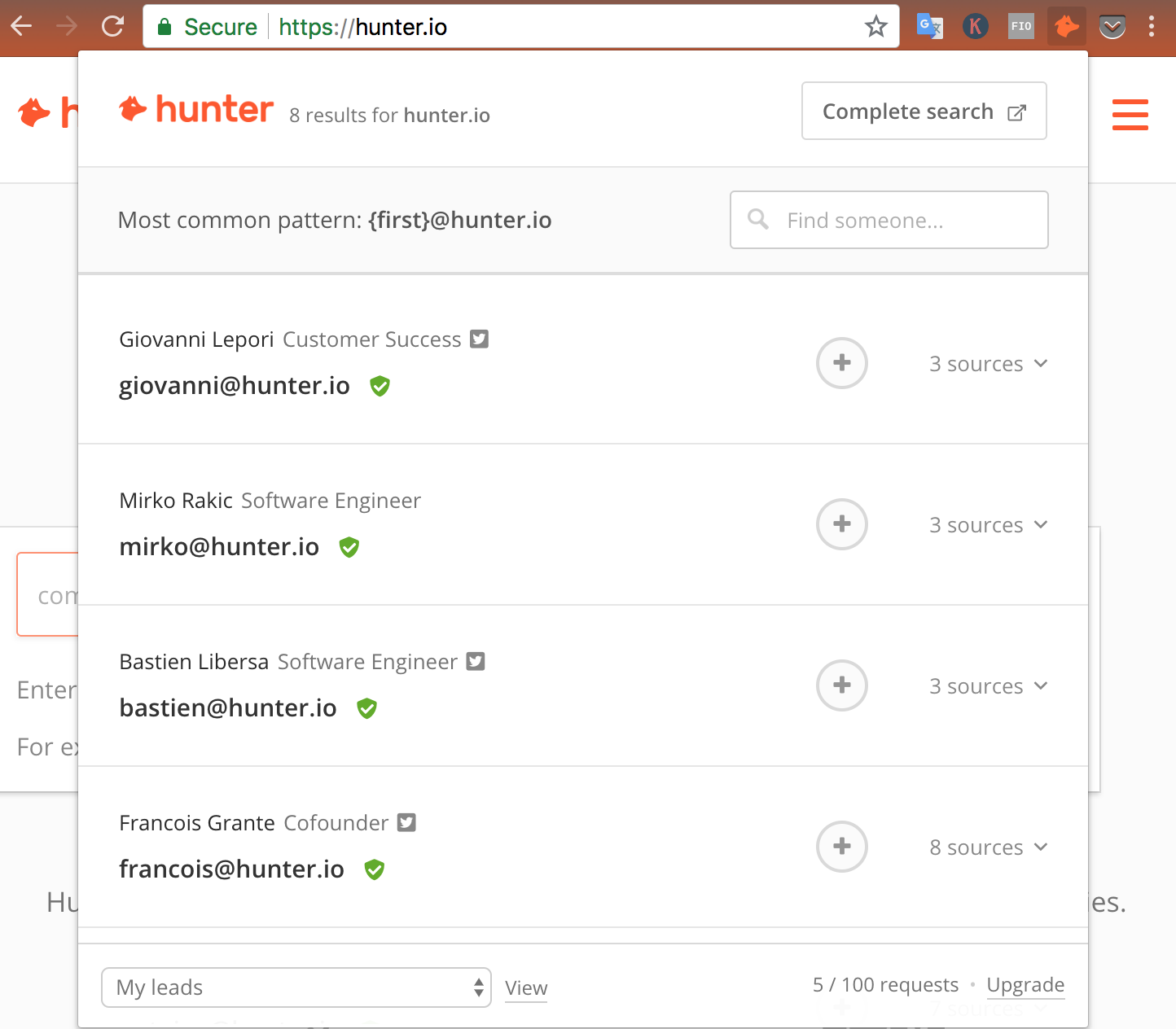
A perfect pitch, stuffed with relevant information and incentive, can still result in radio silence from a potential client. However, the issue might not be sending the wrong message, but that it’s being seen by the wrong person.
Specific job roles and industries, like PR, would be at a disadvantage if their email address wasn't accessible -- so they opt in -- and they post it online somewhere. But finding the email of someone who hasn’t put it online is another issue.
These days, people are more aware of what they have online and what they don’t (especially with GDPR). So if your name shows up in their inbox unannounced, their first thought could be about how you got their email instead of focusing on what you're offering them. This is the online version of doorstepping, and there’s a reason (respectable) sales/PR/journalists look down on this practice. Having a potential client or employer start off on the defensive is hardly the best move -- but there are ways to negate this and get your message read.
Table of Contents
Simple methods of finding an email address
Check the “Contact Us” section
These emails are usually a general info@company.com but it's worth noting that some companies have their department heads listed with their contact information and/or full name (which might be all you need... see below).
Guess from a known email address
If you know their full name, simply apply the framework of the company email domain with their name.
If the general email address is hello@company.com, you know it's a small company, and you're looking for John Doe, you could try john@company.com.?
However, if the company is bigger it could have multiple people named John so you could try another standard email format, firstname.lastname@company.com, or john.doe@company.com.?
Leverage the general email address
If the only contact available on the site is a general info@ email address, it doesn’t mean that it's completely useless. However, this isn’t the best place to send a pitch or specific enquiry. What you should do instead is request the contact of the person in charge of the appropriate department.
Include a brief explanation so the person receiving the emails won’t think they’re adding their colleague to a spam list. An email along the lines of this would be appropriate:
Subject: Correct email address?
Email: info@company.com
Hello,
I’m looking to get in touch with the sales manager in relation to an on-going project I’m running that relates to your recent product launch. Could you send me their email or CC them to this email?
Many thanks,
Make a phone call
Another simple thing that people tend to forget in this digital age: the phone call. The majority of companies will list a phone number on the site. This will generally be beside the info@email or at the footer of the site.
General number or not, it’s a lot easier to ignore an email than an actual person. But keep in mind that being prepared for this call is important. Calling with a general enquiry for an email address will most likely be fobbed off with the general email. To avoid this, use language that asks to confirm contact information rather than requesting it.
“Hi, I’m just looking to get in touch with your Sales Director, can I confirm that her email is jane_doe@Companyname.com”
The person on the phone is more likely to correct an incorrect email than give the email outright.
This is a great technique if you’ve extrapolated what the email may be based on another known company email.
To recap...
The above methods of obtaining an email should be the first stop. If a company has their sales director’s email on their site, they won’t appreciate a call to the office to request it. To recap, the first ports of call should be:
-
Check the company website to see if the contact has their email publicly available.
-
Use a known email within the company and insert the contact’s name in the formula.
-
Email the info@ email address requesting a contact.
-
Call the company and confirm the email address.
If the above options aren’t viable, or are resulting in dead ends, then there are a myriad of online tools to help. Selecting which to use, however, depends on the purpose of your email.
Reasons for wanting an email address
The reasons for wanting someone’s email are as diverse as the potential responses to those emails.
- For jobseekers, finding the exact person to get a CV in front of is as crucial as the content on it.
- For those in sales where relationships are key, making sure that a pitch is reaching the person who ultimately makes the decision is the crucial factor.
- For bloggers, having their posts linked to and shared by the right person from the right publication can make or break their site.
For these reasons, we’ve divided up our resources into the categories of who will find them the most useful. This isn’t to say that these tools are restricted, simply more applicable in these instances. Often finding an email takes a creative approach, using a few different methods combined.
Finding emails as a job seeker
The first point of call for job seekers should be the company’s recruitment page. If there aren’t any job openings listed, then sending a CV to a generic jobs@company email is going to ensure that a CV is seen by nobody.
If a job seeker believes that they could add value to a company they’ve found, and want to preemptively strike, then getting directly to the HR head is crucial. Here are three ways to get the correct email address:
Clearbit Connect
This is one of the most simple and useful tools out there for finding emails linked to a domain. Clearbit is a Gmail plugin that takes a few seconds to install from the Chrome store and is crazy easy to use.
Note that Clearbit seems to hold on to emails even after people have left the company, so just double check that it’s the correct contact. You can also check this while you’re on LinkedIn via the company’s profile.
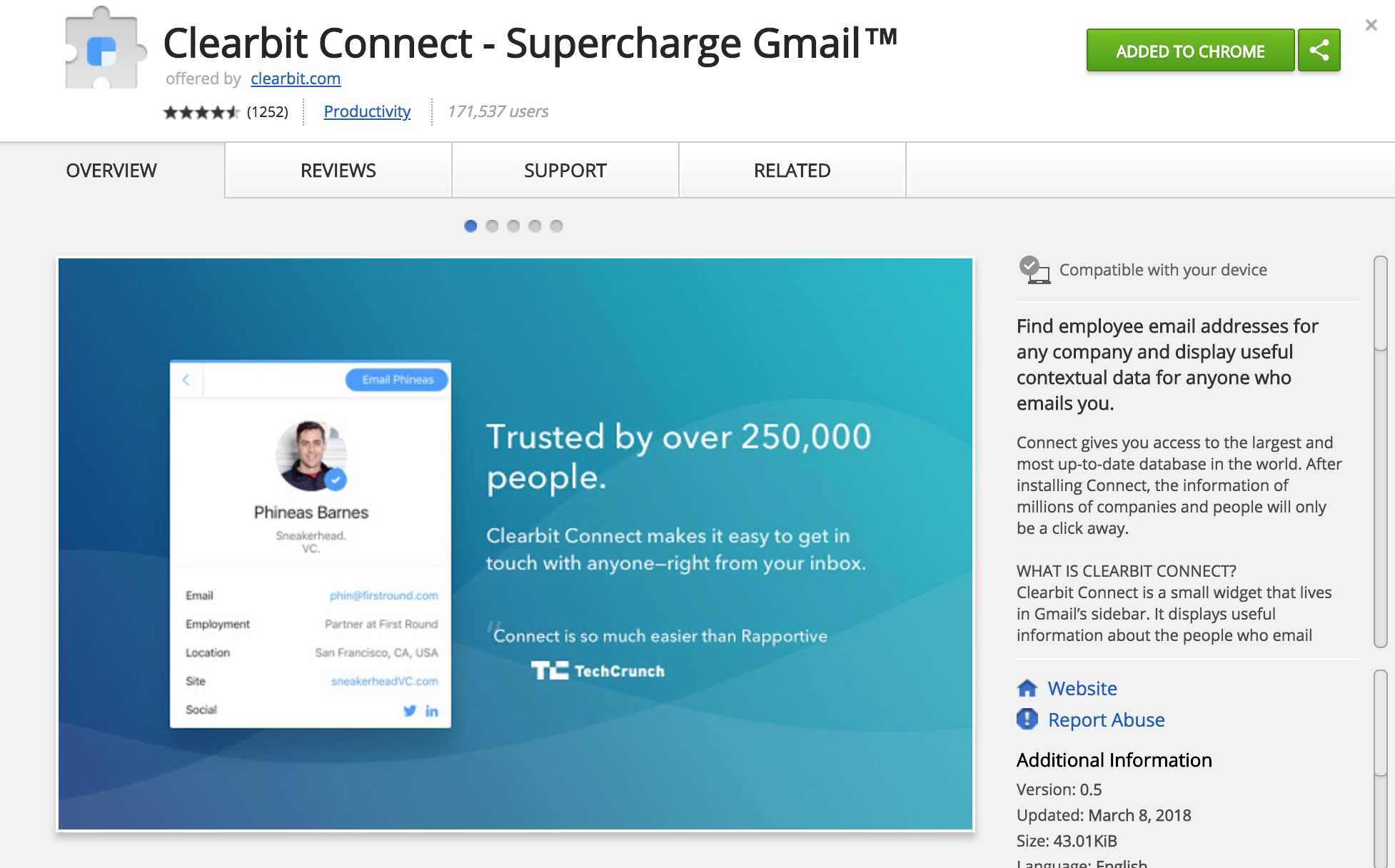
Just type in the name of a company and it will bring up all email accounts linked to that domain. For bigger companies, it will have their full name and title, but sometimes it will just have the address. (This means that, again, there will be a little digging on LinkedIn to find the right person.)
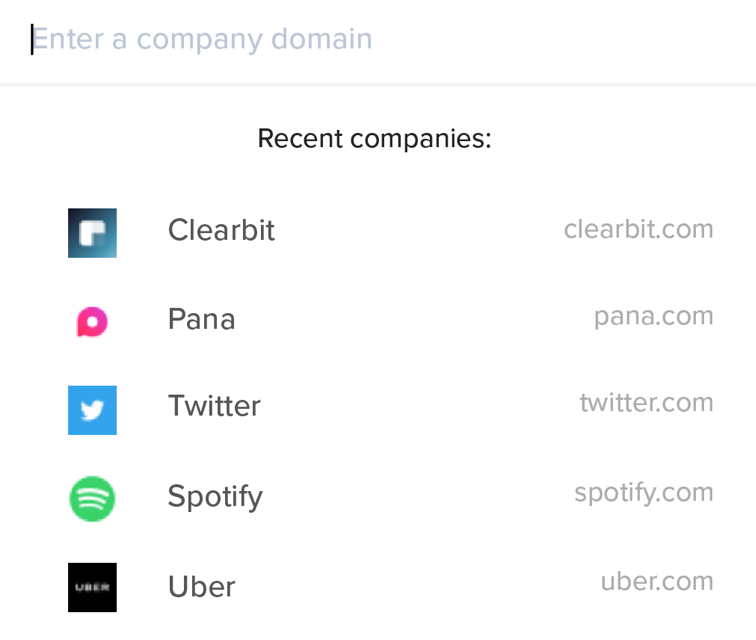
For example, if we search for Clearbit Connect themselves, all the staff, their emails, and their job titles are visible.

However, when searching for a company like reviews site TechRadar, we can see that it only has two job titles. (This is when a search on LinkedIn can help.)

Email Permutator and Hunter.io
If you scour a company’s website and come up empty-handed on how they structure their employee’s emails, then this is a slightly convoluted method, but it works.
On the email permutator site type in the target’s name and the company domain. The site compiles the most common permutations of what the email could be. It’s important to remember that the email you’re looking for may not be here if the company use unique usernames, but most companies will have a standard structure.
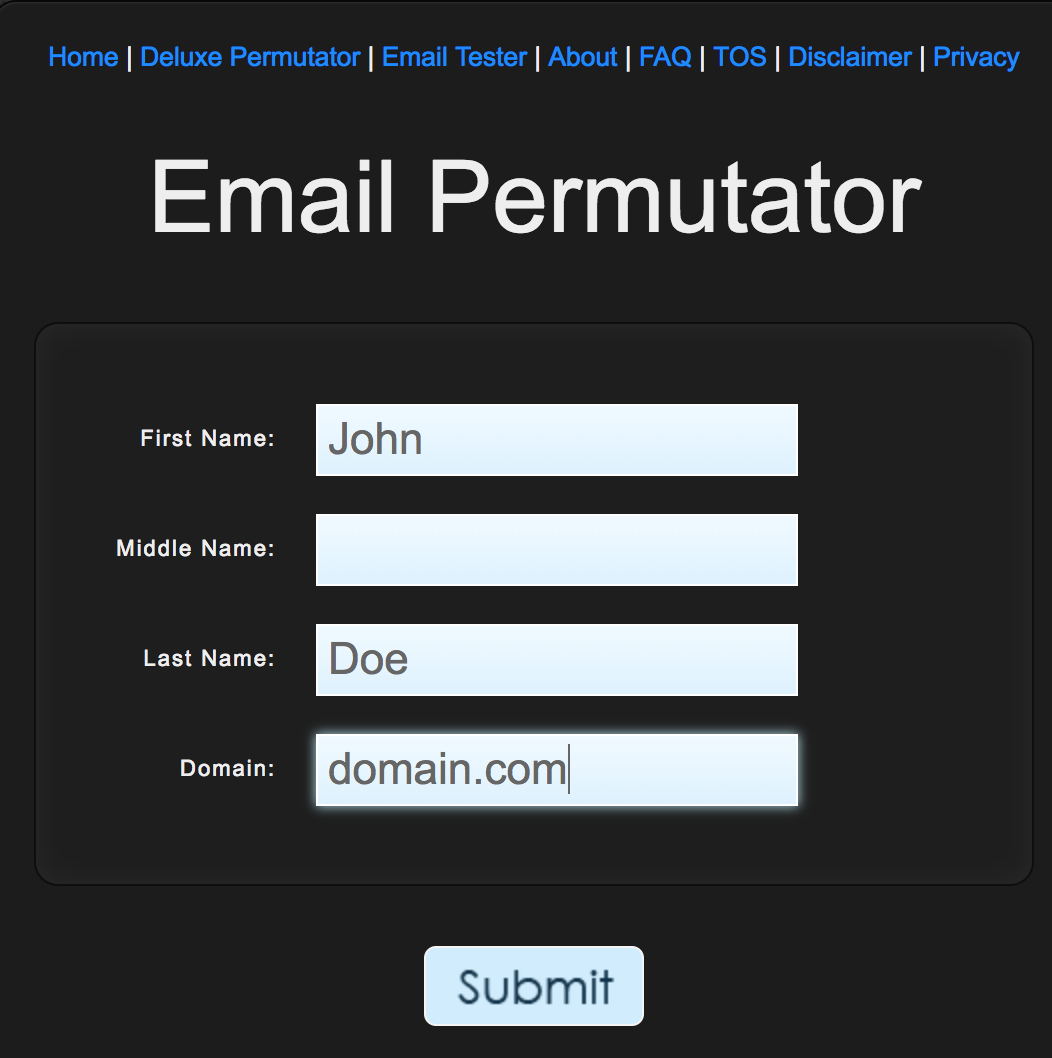

Then, you can verify each address using Hunter.io. You’ll need to sign up for free, but once you’re in, it’s a simple copy and paste from the Email Permutator.

The best thing about Hunter is that even if it can’t verify the exact email address it will look at the general structure of emails on that domain and suggest which one is most likely.

Finding emails as a sales rep
This is a big one. Using Clearbit Connect can be useful here, but it does set you up for a cold pitch email, which can get thrown by the wayside. Anyone working in sales knows that it’s not just about selling the product, but selling yourself too. Here are some tools that are useful in not only gathering emails, but also to help with extra ways of contact to ensure a smoother sale.
LinkedIn Forums
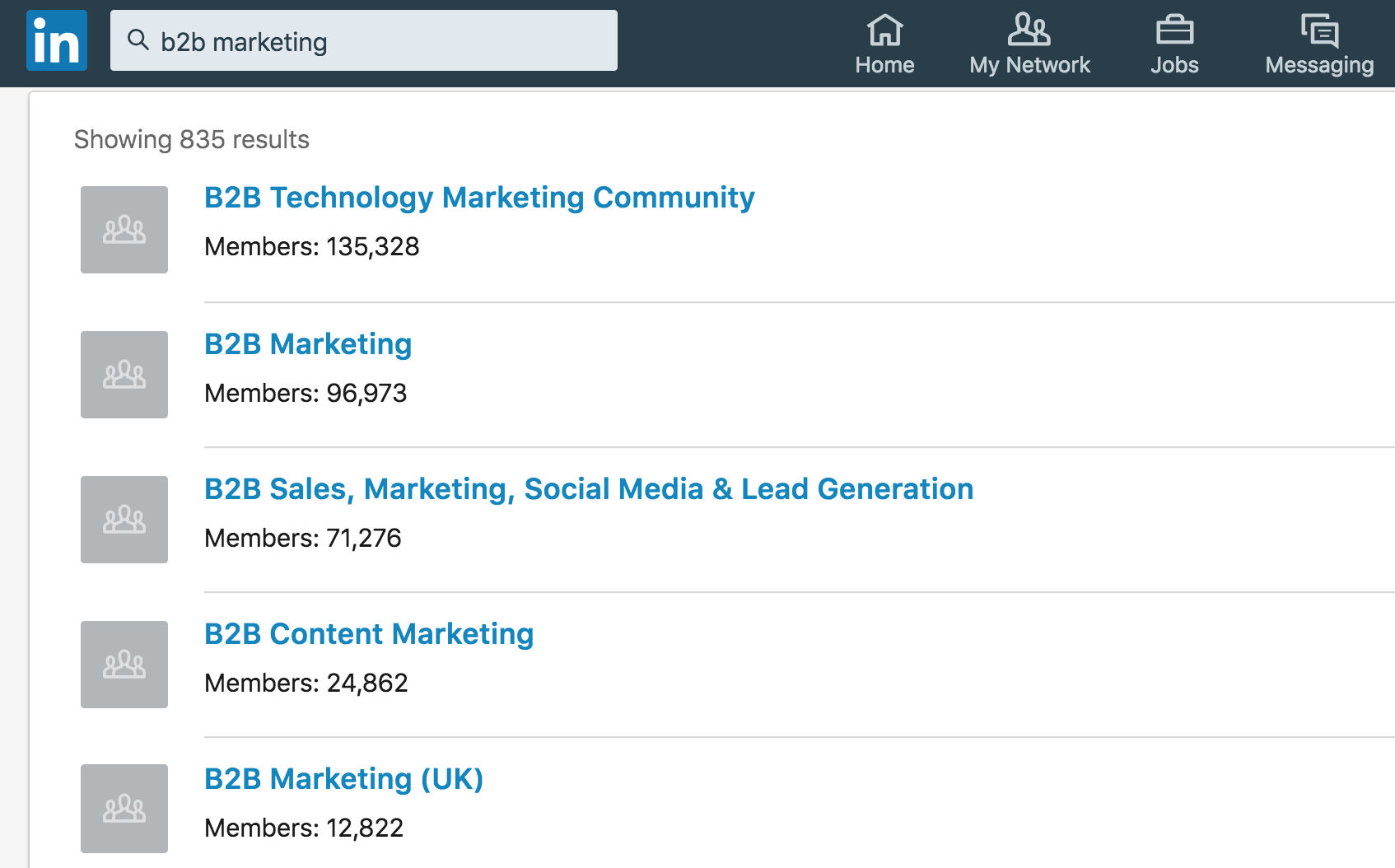
Rather than cold pitching, make a habit of joining LinkedIn groups and participating in discussions. Not only will it keep you informed on changes in your industry, but you will be able to see what is being offered and what people are looking for. You know, networking.
There are thousands of groups on LinkedIn for every market imaginable, so the more niche, the better. When searching for broad terms such as “B2B Marketing” LinkedIn shows over 800 groups on this topic, or variations of it.
In these groups members can answer questions and become known in the community as an authority. Here you can recognise potential clients, and interact with them.
Once contact has been established within the group, members have the option of adding each other as direct contacts. This gives both members full access to each other’s contact information on their LinkedIn page. Not only does this reveal an email address, but also establishes rapport or at least a certain level of trust.
Pipl.com
This is a great tool if the information you have is partial or incomplete. For example, if a company has the names of their department heads, but no contact details for any of them.

Pipl.com allows users to search by name, phone number, email, or even usernames. It isn’t just restricted to finding emails, but it gives an even more full picture of the contact.
If searching by name, this tool will also pull up their usernames from social media sites, again introducing another point of contact to help build a more full picture of the contact. It’s also possible to narrow down the search by selecting a location and age range.
Personal Website
Even if your desired contact is already working for a company, many understand the importance of creating a personal brand. This is especially true of freelancers and independent contractors, where they may have a company website, but also a separate online presence.
They will be more likely to have an email address on their site that will allow people to get in touch with them directly. Check the “About” or the “Contact” section again and follow the earlier steps of checking the simple steps first.
Data.com Connect
This is a powerful search tool with a huge amount of contact information. This site is completely free, but it does come with a caveat. It is essentially a crowdsourced list of data where all the information is user generated.
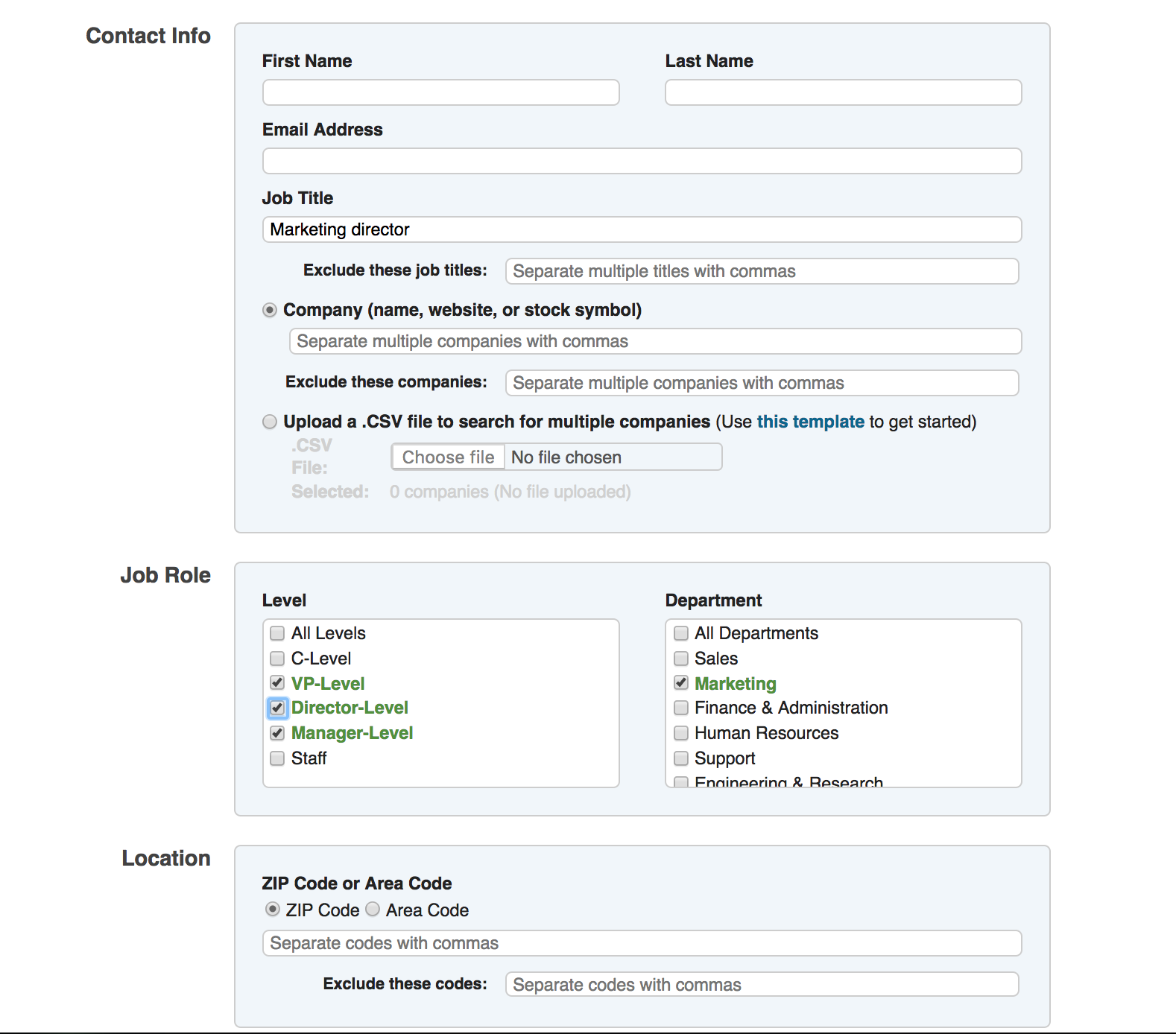
It works on a give one, get one system. Users add contacts to build up points on the site which they then spend to get contact information.
If users meet a potential contact at a conference, but forget to get their contact information, they can search for them with the information they have. Searches can run with names, job descriptions, job location or a huge amount of other factors. If looking for one particular person, users can be super detailed.
It’s also a useful tool to generate leads if the search is kept general. Searching by job level and department and location will show a list of email contacts of clients that could fit.
This is a mainly crowdsourced site, and as such should be treated with caution. Think of it as the Wikipedia of contacts; a great place to start, but not to fully rely on.
Finding emails as a blogger
In the blogging industry, contacts are key. Cold calling is a rough game to play in any area, and with everyone calling themselves an influencer now, what makes one stand out?
It’s important to remember that bloggers are now an important part of marketing campaigns. They lend authenticity to a project and are the person people can relate to and rely on. They have to be an expert voice that people know they can follow.
The contacts that they’re looking for are going to have to be ones that are congruent with their online presence. Luckily there are a few tools and tricks to do that.
Niche Facebook Groups
Much like LinkedIn groups, Facebook groups are a great place to find contacts and turn them into clients. The key is to find the right niche.
For example, a travel blogger looking for new clients in South America should find and join as many South American travel and expat groups as they can. These groups will not just have people traveling, but often tourism boards and businesses will be there too, promoting services.
Here bloggers can see what kinds of things travellers are interested in, and what kind of services are lacking. Interact with the potential clients here and you’ll be able to request a contact either on a comment thread or by DM.
Hunter.io
Hunter.io was mentioned earlier but it can be used slightly differently. This time there’s no need to go to the Hunter Homepage, but this is an unobtrusive Chrome extension.
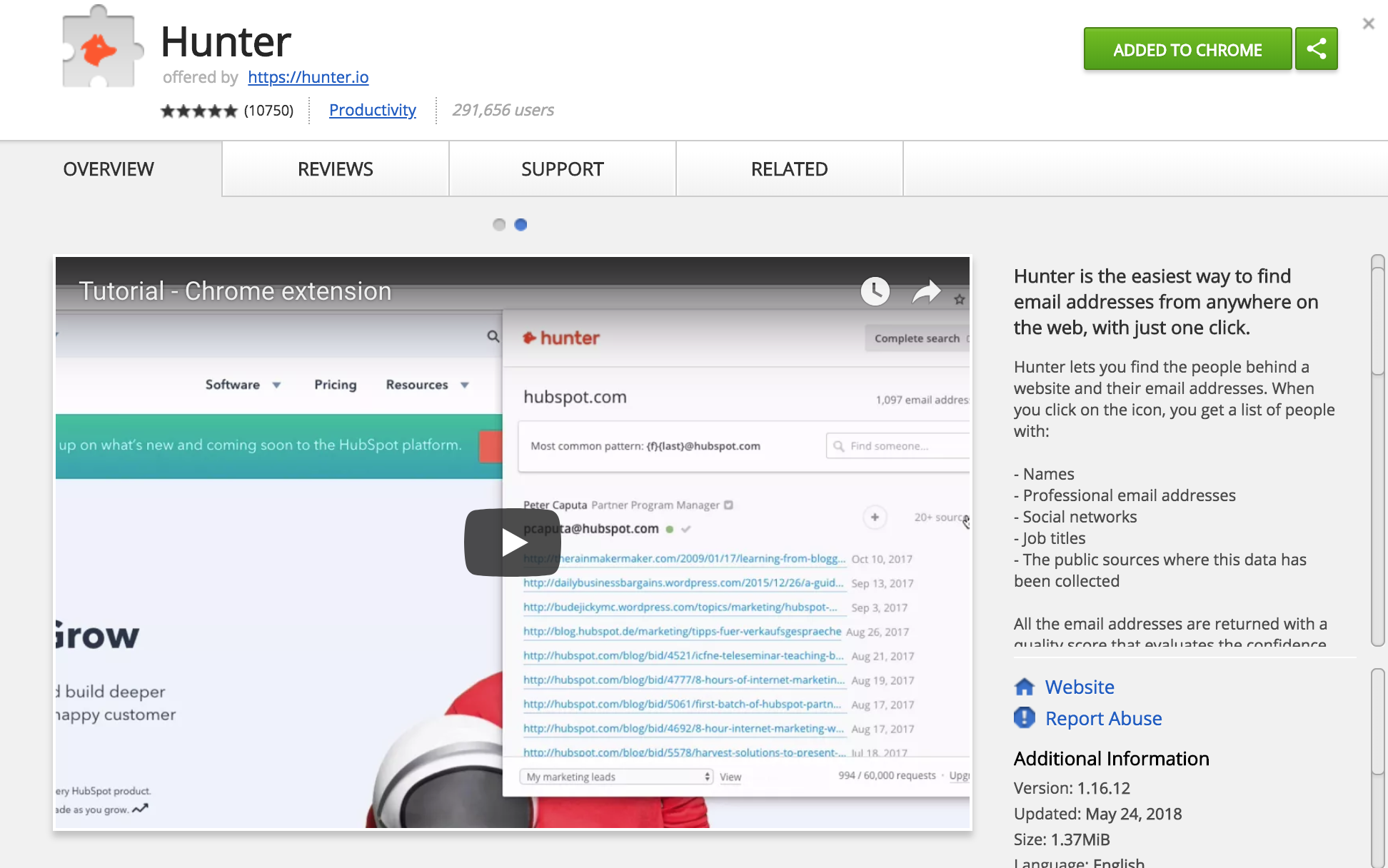
When you’re researching potential clients on their website, all you need to do is click on the Hunter logo in the browser and it will pull up all available email addresses.
It has a scale of verification, a small green shield with a tick is completely verified, a green circle is likely, down through orange and finally to red.
